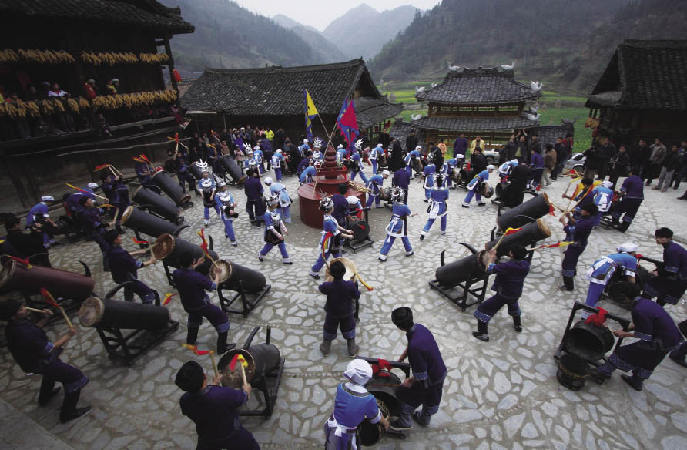Qiannan Prefecture
– The Land That Time Forgot
A peerless spectacle in the reserve is the underground forest. It’s not a metaphor. In the darkness of a limestone cave, unexcitedly called “Cave 1285,” grows a sprawl of eerily warped trees whose leafless branches all stretch downward. On closer inspection one sees that the “branches” are actually the root system of aboveground woods that, astonishingly, have pierced dozens of meters of bedrock to reach the cavern below, and have continue to grow down even further.
Another charming feature of the reserve is its water system, which includes waterfalls, rock pools and rivulets both above and under ground. A standout that makes for a postcard photo is the Yuanyang (Mandarin Duck) Lake – two major lakes, four smaller ones and a number of interconnecting brooks form a dynamic maze of waterways that bulge and shrink depending on the season. They say the color of the water also changes depending on the time of day, and glimmers in up to seven different shades.
The Shui Ethnic Group
In the south of the prefecture is Sandu Shui Autonomous County, China’s only autonomous county of Shui, an ethnic minority of 400,000. Legend says the scenery there is “as beautiful as the feather of a phoenix.” And sure enough, with Yaoren Mountain, the Dulliu River, Chandan Cliff, which “lays stone eggs” (more on that oddity below), and the “Moonlight Tree,” which shines in the evening, the county does not disappoint.
But the real treat here is meeting the locals. Fully half of all Shui live in Sandu.
The origins of the Shui people are indicated in a folk song passed down through the generations and still sung today:
In the late Shang Dynasty,
From the southern mountains we came.
With our language, the gift of our ancestors,
Home in Yelang Kingdom we claimed.
Looking back to my forgotten land,
I see the moon reflected in rivers grand.
The song thus tells us that the Shui are not the aboriginal inhabitants of Sandu, but migrated from another region. From where exactly did they come? It’s hard to know. Popular folk legends, songs and even religious incantations all indicate that they moved from the south of China – there are many references to water and even the sea. In many Shui customs fish constitute a very important element.
 |
| Villagers of Guluzhai Village in Sandu County perform traditional bronze drum dance. |
Many scholars now believe that the Shui are actually one clan of the Baiyue, a collection of tribes that inhabited southern China in ancient times. But the question is yet to be conclusively settled – the Shui’s written language seems to suggest they might be from the central area of China, and that they could have been an ancient Han Chinese tribe.

